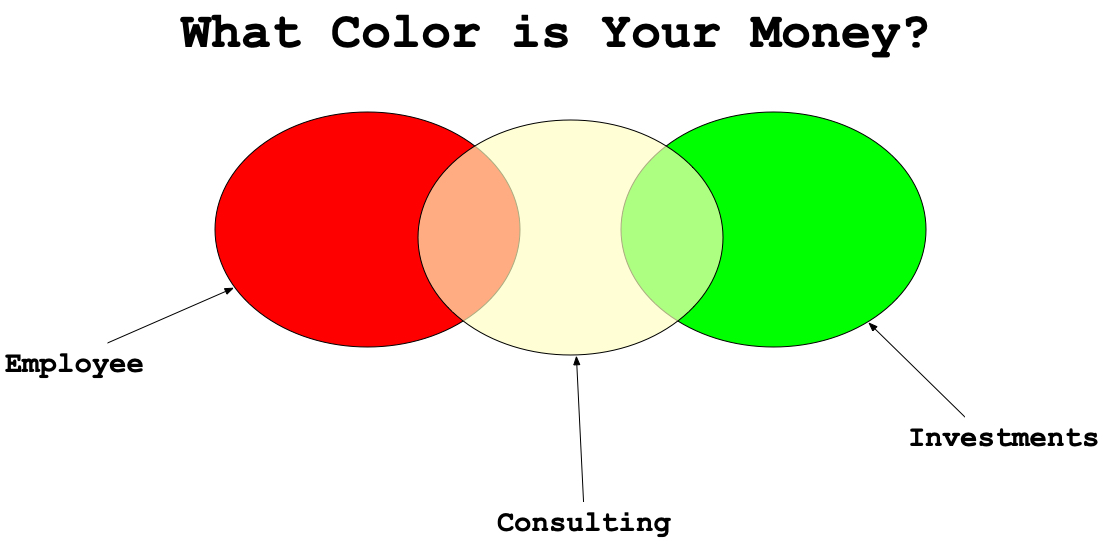Chapter 10: Career #
One of the least talked about school topics is how to get a job and build a career. Much of the focus in school is on theory or getting good grades. This section discusses practical techniques to get a job.
Getting a job by becoming a Triple Threat #
One formula to get a job in Data is to become a triple threat. What is a triple threat?
- Degree in Data related field: Data Science, Computer Science, Information Systems, etc.
- Rich portfolio of high quality and original work
- One or more industry-recognized certifications
How to Build a Portfolio for Data Science and Machine Learning Engineering #
The elements of a good portfolio for a data career include:
- Building a screencast that is 1-5 minutes with professional-sounding audio and video and clear explanations.
- 100% repeatable notebooks or source code
- Original work (not a copy of a Kaggle project)
- Authentic passion
Something to consider in building a Jupyter notebook is to break down the steps in a data science project. Typically the steps are:
- Ingest
- EDA (Exploratory Data Analysis)
- Modeling
- Conclusion
When building a portfolio for Machine Learning Engineering, additional items are needed. Specifically, many aspects of MLOps need discussing in the README and screencast. There are many good references on MLOps from Google as well as Microsoft. These can help inform your final portfolio.
How to learn #
Software related careers are unique compared to other professions. Software related careers have much more in common with professional athletes, martial artists, or musicians. The process of achieving mastery involves an embrace of suffering and a love of making mistakes.
Create your own 20% Time #
Never trust a company to be the sole source of what you need to learn. You have to carve out your learning pathway. One way to do this is to spend a couple of hours a day learning new technology as a habit. Think about it as an exercise for your career.
Embracing the Mistake Mindset #
It is common to avoid mistakes and want perfection. Most students want to get a perfect score on an exam, an “A” in class. We prevent car accidents, dropped groceries, and other mistakes.
In learning to be a competent software engineer, it is better to flip this on its head. A constant stream of mistakes means you are on the right track. How many mistakes have you made this week? How many have you made today? William Blake said this best in 1790 when he said, “If the fool persisted in his folly, he would become wise.”
Finding parallel hobbies to test your learning #
If you asked a quorum of successful software engineers with 10+ years of experience, you would hear some version of this: “I am a learning machine.” So then, how does a learning machine get better at learning? One method is to pick a sport that takes years to master that you are a complete beginner and use it to observe yourself. Two games in particular that are well suited for this activity are rock climbing and Brazilian Jiu-Jitsu.
Brazilian Jiu-Jitsu has the added side-effect of teaching you practical self-defense.
Pear Revenue Strategy #
We live in a new era. It is possible to start a business with a laptop and an internet connection. As a long time consultant and entrepreneur, I have developed a framework that works for me. When evaluating who to work with and what project to work on, I think of PPEAR or “pear.”
-
P(Passive)
-
P(Positive)
-
E(Exponential)
-
A(Autonomy)
-
R(Rule of 25%)

Passive #
- Does this action lead to passive income: books, products, investments?
- Do you own the customer? Ideally, you focus on holding the customer.
- What is the royalty relationship?
- Predator (20% or lower) - There should be a very compelling reason to work with a predator. Perhaps they get you exposure, or they take a chance on you. - The downsides of predators are they often have bloat in process. How many layers of people do you have to interact with? How long does it take to get something done? It could be 10-100 times longer than working by yourself.
- Partner (50% or higher) - There is a lot to like about an equal partnership. The partner has “skin in the game” in terms of money and their time.
- Platform (80% or Higher) - There are pros and cons to using a platform. The advantages of a platform are that you can retain most of the revenue if you are self-sufficient. - The disadvantages are that if you may not have a benchmark yet. You may not have a framework for what good is. You may want to work with a predator and see how they do things before going right to the platform.
Note: Not everyone wants to be an author, creator, but everyone can be investor. Maybe this puts 50% of your W2 income into an index fund or renting out a house.
Positive #
When working on a project or working with a partner, it must be a positive experience. Even getting paid very well eventually gets old if the environment is toxic. Some questions to ask are:
- Am I happy every day?
- Do I respect the people I work with each day?
- Are the people I am working with high achievers with a track record of success?
- Does my health increase or maintain: sleep, fitness, nutrition?
- You are the average of the five people you spend the most amount of time with
Autonomy #
Another important question on a project or working with a partner is autonomy. If you are good at the way, you do you need freedom. You know what good is; your partner may not. How much independence do you have? Are you able to ultimately bet on yourself, or is success in the hands of other people.
- Does this action increase autonomy or create a dependency?
- Do I learn and grow? A new skill, new prestige, or brand affiliation.
- Is it automatable or manual? Avoid tasks that cannot be automated.
- Am I betting on myself, or I am dependent on others for my success?
Exponential #
Another important question on a project or working with a partner is exponential potential. Perhaps you have decided to work with a predator partner because of the exponential potential of the project. If you are working with a predator, but the project doesn’t have exponential potential, then perhaps it isn’t a good project.
- Does this action lead to an exponential reaction?
- Revenue
- Users
- Traffic
- Press or Prestigage
Rule of 25% #
What color is the money you make? If you are an employee, this may be valuable to you because you learn skills and build a network. Keep in mind that this is “red” money, though. This red money can disappear at any time. You are not in control.
Consulting is “yellow” money. It is a massive step in the right direction. You can do some consulting while you work as an employee. This action takes away some of the risks of being an employee. As a consultant, though, you have to be careful never to have one client that is more than 25% of your total income and ideally not more than 25% of your consulting income. Familiarity breeds contempt. The best relationships are when people are on their best behavior and know the link is only there to solve a problem.
Investments like real estate, index funds, and digital products are “green money.” This income stream will always pay you. The ideal scenario is to make 80% of your income with green money and limit consulting or employment to 20% of your income.

- One revenue stream cannot exceed 25% of gross revenue for the year.
- What color is money: red, yellow, green? Optimize toward green money.
- Red == Employee
- Yellow == Consulting (see the rule of 25)
- Green == Passive
NOTES #
- Thank you for feedback and inspirational ideas from Andrew Hargadon and Dickson Louie
- Some good related advice in 1,000 True Fans? Try 100
Remote First (Mastering Async Work) #
Disruption looks evident in hindsight, but it is harder to spot them as they emerge. Remote first does appear to be a real disruption. Hashicorp talks about remote work on their website in great detail.
One driving factor is the cost of homeownership. Certain regions of the United States don’t make sense to build a workforce, like the Bay Area. The JCHS (Joint Center for Housing Studies) of Harvard University has many interactive data visualizations that explain this.
Another factor is that remote-first optimizes outcomes. A significant issue with in-person environments is the “appearance” of progress vs. actual progress. Getting dragged into meetings for hours that have no result is a good example. Having the “sales” team disrupt the developers writing code in an open office plan is another. When the focus is strictly on outcomes, then remote-first starts to make a lot of sense.
Getting a Job: Don’t Storm the Castle, Walk in the backdoor #
The technology industry always has a “dream” job title. These titles come and go. Here are a few: Unix systems administrator, network administrator, webmaster, web developer, mobile developer, data scientist. What happens when these job titles appear is that companies panic to hire these positions.
Then all progress grinds to a halt, and more and more hoops appear. A classic example is asking someone for ten years of experience on a technology when it has been around for one year. It becomes impossible to get into “the castle.” The front of the castle has guards, hot oil, spears, and a monster waiting in the moat. Instead, think about a back door. Often a back door is a less prestigious job title.
Book Wrapup #
Suppose you got this far; thanks for hanging into the end of the book. This book is both a hands-on guide to solving Cloud Computing solutions and a guide to thinking about your career. One final piece of advice, don’t ask permission to be successful. Find a way to bet on your success.